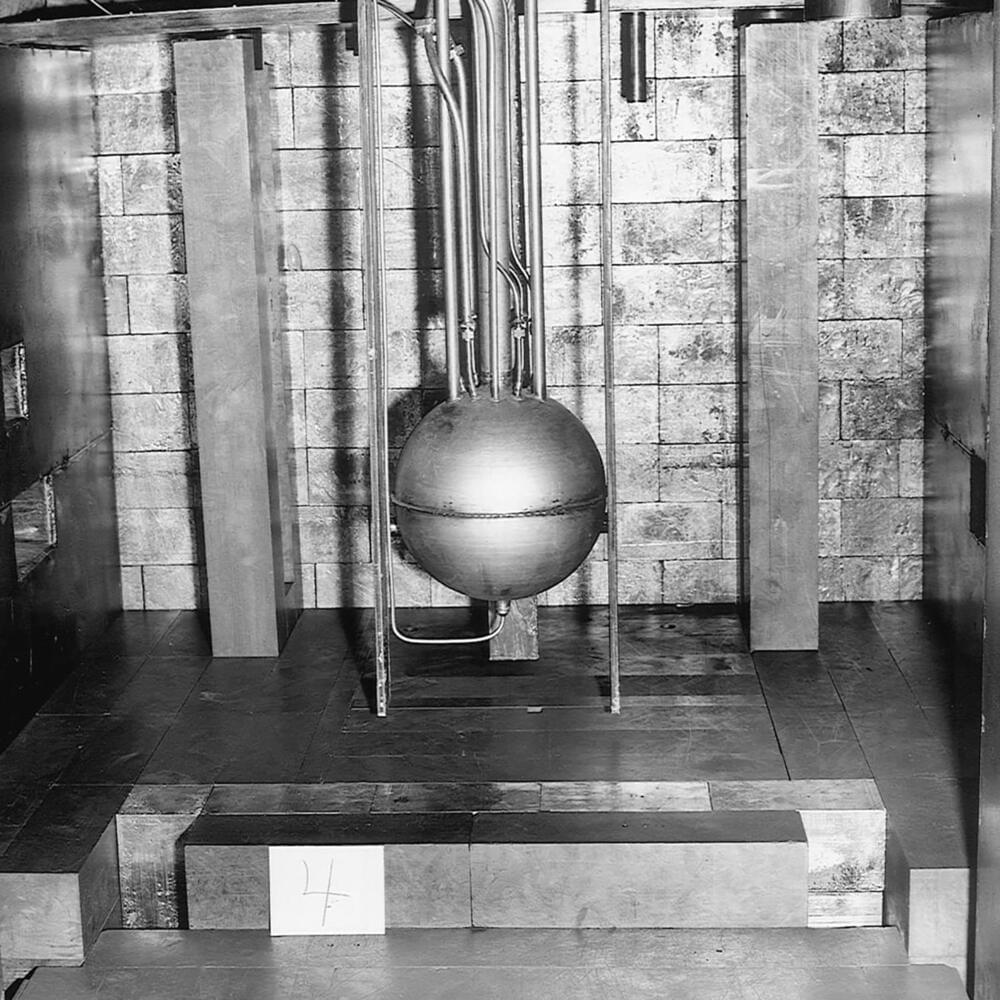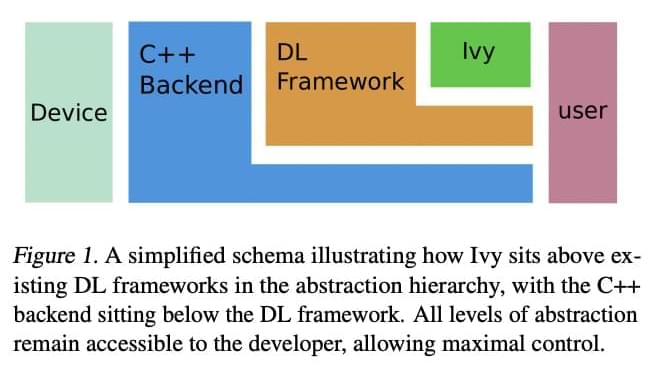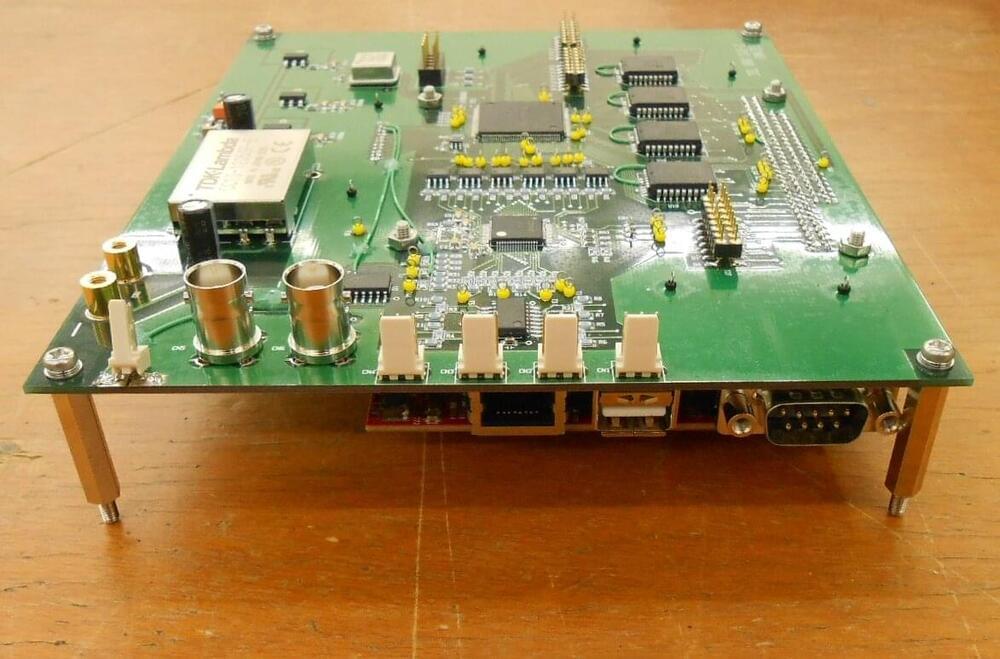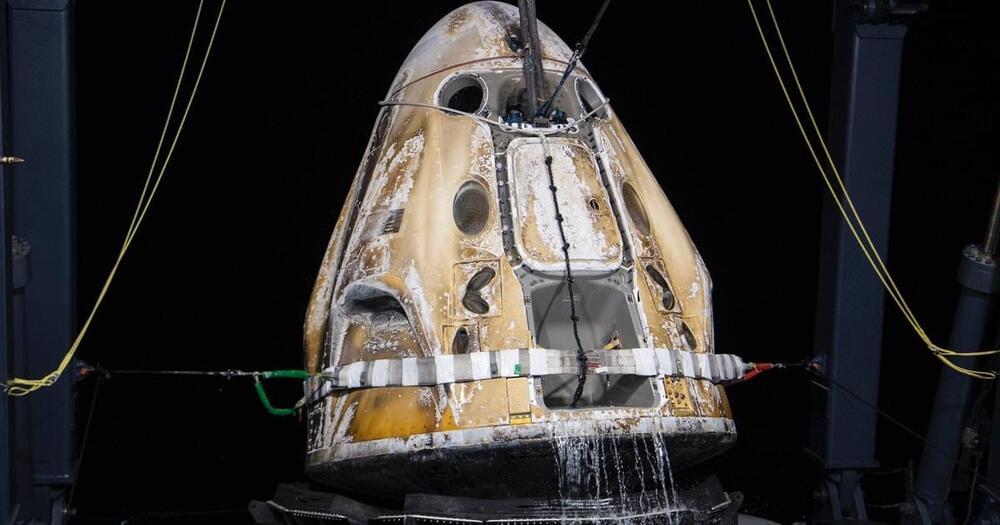50-milliwatt Water Boiler reactor went critical at Los Alamos National Laboratory. It held about 20 ounces of uranium dissolved in a water-filled, 12-inch sphere. It was the first nuclear reactor to use enriched uranium, and the first critical assembly built at the lab.
Page 4863
May 9, 2022
Gwynne Shotwell says SpaceX will reach Mars by 2030! But why must we become multiplanetary?
Posted by Ron Friedman in categories: Elon Musk, space travel

Are Elon Musk and Gwynne Shotwell right? Is Mars that important? Why must we become a multiplanetary civilization?
#space #nasa #spacex #elonmusk.
Support my channel!
https://www.patreon.com/AngryAstronaut.
May 9, 2022
How scientists are giving robots humanlike tactile senses
Posted by Shubham Ghosh Roy in category: robotics/AI

Giving robots sight and hearing is fairly straightforward these days, but equipping them with a robust sense of touch is far more difficult.
May 9, 2022
Cryostasis Revival: The Recovery of Cryonics Patients through Nanomedicine
Posted by Paul Battista in categories: biotech/medical, computing, cryonics, life extension, nanotechnology
Cryostasis Revival by Robert Freitas is the first comprehensive technical exposition how to revive cryonics patients in the future. This 700+ page book with thousands of references, and technical color illustrations, is now available on Amazon in a limited textbook hardcover edition.
Cryostasis is an emergency medical procedure in which a human patient is placed in biological stasis at cryogenic temperatures. A cryopreserved patient can be maintained in this condition indefinitely without suffering additional degradation, but cannot yet be revived using currently available technology. This book presents the first comprehensive conceptual protocol for revival from human cryopreservation, using medical nanorobots. The revival methods presented in this book involve three stages: collecting information from preserved structure, computing how to fix damaged structure, and implementing the repair procedure using nanorobots manufactured in a nanofactory – a system for atomically precise manufacturing that is now visible on the technological horizon.
May 9, 2022
IVY: An Open-Source Tool To Make Deep Learning Code Compatible Across Frameworks
Posted by Jose Ruben Rodriguez Fuentes in category: robotics/AI
As ML aficionados, we’ve all come across interesting projects on GitHub only to discover that they are not in the framework we want and are familiar with. It can be tedious at times to reimplement the whole codebase in our framework, let alone deal with any errors that may arise throughout the process. It is a tedious chore that no one wants to do. Isn’t it good to have something that doesn’t care what framework you’re using? It will provide you with code in your desired framework, whether it is JAX, PyTorch, MXNet, Numpy, or TensorFlow. This is what IVY is attempting to do by unifying all ML frameworks.
The number of open-source machine learning projects has surged significantly over the past. This is evident by the fast-growing number of Github repositories using the keyword Deep learning. Because of different frameworks, code sharability has been considerably hampered. Aside from that, many frameworks become obsolete in comparison to newer frameworks. For software development where collaboration is vital, this is a significant bottleneck. As newer frameworks come into the scene framework-specific code quickly becomes obsolete, and transferring code across frameworks is akin to reinventing the wheel.
In today’s collaborative environment, it is vital to find a common level of abstraction. The development of IVY began with the language, with Python emerging as the clear choice we go further into Python frameworks, and we see that they all operate on the same fundamental principles. A tensor can be manipulated in a variety of ways, but the core tensor operations are constant across frameworks. As a result, IVY was formed as a basic abstraction layer.
May 9, 2022
A new method to synchronize devices on Earth makes use of cosmic rays
Posted by Brent Ellman in category: space
Various technologies, networks and institutions benefit from or require accurate time keeping to synchronize their activities. Current ways of synchronizing time have some drawbacks that a new proposed method seeks to address. The cosmic time synchronizer works by synchronizing devices around cosmic ray events detected by those devices. This could bring accurate timing abilities to remote sensing stations, or even underwater, places that other methods cannot serve. Early tests show promise, but the real challenge may lie in the adoption of this new technique.
Humanity is intimately connected with the idea of time. Historically, we used the cosmos itself—stars, the sun, and the moon—to measure time and coordinate our activities. It’s fitting, then, that researchers are looking out to the cosmos again to further develop our ability to keep time. Professor Hiroyuki Tanaka from Muographix at the University of Tokyo devised and tested a way to synchronize multiple devices, so they agree upon the time, that makes use of cosmic rays from deep space. Appropriately, it’s called cosmic time synchronization (CTS).
“It’s relatively easy to keep time accurately these days. For example, atomic clocks have been doing this for decades now,” said Tanaka. “However, these are large and expensive devices that are very easy to disrupt. This is one reason I have been working on an improved way to keep time. The other is that, related to time measurement, position measurement could also be made better. So really, CTS is a precursor to a potential replacement for GPS, but that’s still a little further down the line.”
May 9, 2022
Crew-3 Splashdown: Watch SpaceX’s Crew Dragon “Endurance” splash into the Gulf of Mexico
Posted by Atanas Atanasov in category: space travel
Watch the moment when the capsule hit the water.
After six months on board the International Space Station, four astronauts tumbled back to Earth on board SpaceX’s third Crew Dragon mission.
May 9, 2022
Scientists Discover Unexplained Abundance of Rare Nuclear Fusion Fuel on Earth
Posted by Josh Seeherman in category: nuclear energy
Helium-3, a potential source of limitless clean energy, may be ten times more common on our planet than previously thought, reports a new study.
May 9, 2022
Retinal Cell Map Could Advance Precise Therapies for Blinding Diseases
Posted by Genevieve Klien in categories: biotech/medical, health, robotics/AI
Researchers have identified distinct differences among the cells comprising a tissue in the retina that is vital to human visual perception. The scientists from the National Eye Institute (NEI) discovered five subpopulations of retinal pigment epithelium (RPE)—a layer of tissue that nourishes and supports the retina’s light-sensing photoreceptors. Using artificial intelligence, the researchers analyzed images of RPE at single-cell resolution to create a reference map that locates each subpopulation within the eye. A report on the research published in Proceedings of the National Academy of Sciences.
“These results provide a first-of-its-kind framework for understanding different RPE cell subpopulations and their vulnerability to retinal diseases, and for developing targeted therapies to treat them,” said Michael F. Chiang, M.D., director of the NEI, part of the National Institutes of Health.
“The findings will help us develop more precise cell and gene therapies for specific degenerative eye diseases,” said the study’s lead investigator, Kapil Bharti, Ph.D., who directs the NEI Ocular and Stem Cell Translational Research Section.
May 9, 2022
See the grand design of spiral galaxy M99 in Hubble image
Posted by Genevieve Klien in category: cosmology
The swirling spiral of the elegant galaxy M99 is on display in this week’s image from the Hubble Space Telescope. As a prototypical spiral galaxy, like our Milky Way, M99 has the classical rotating disk of stars, gas, and dust, which is concentrated and bright in the center and reaches out into space with spiral arms. But his particular galaxy isn’t just any spiral galaxy — it is a “grand design” spiral galaxy, a classification given to the neatest and most orderly spiral galaxies whose arms are particularly prominent and well-defined.
The galaxy M99 is located in the constellation of Coma Berenices and is around 42 million light-years from Earth. As well as being visually stunning, this galaxy is an interesting target of research and has been imaged by Hubble’s Wide Field Camera 3 instrument twice, for two different research projects.
The first project M99 was observed for is one which looked at the difference between two types of explosions that can occur at the end of a star’s life: Novae and supernovae. Supernovae are the more dramatic, famous events, in which massive stars run out of fuel and explode in huge, bright events which can send out shockwaves and leave behind distinctive remnants. The less famous novae are dimmer events that happen when white dwarfs in a binary system with a larger star suck off layers of matter from that star’s outer shell.
















